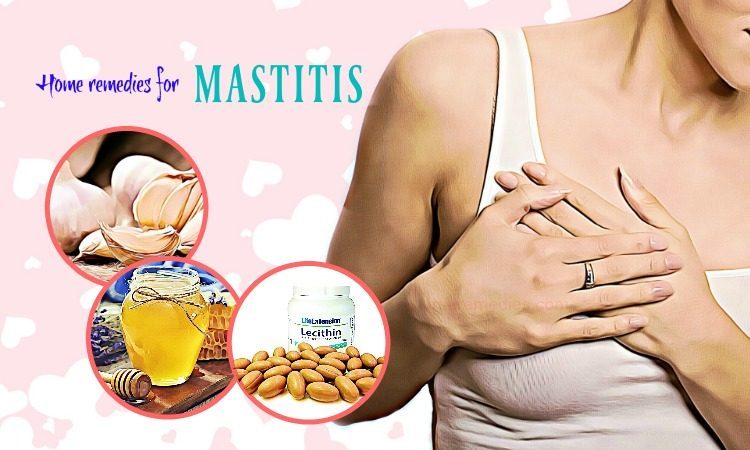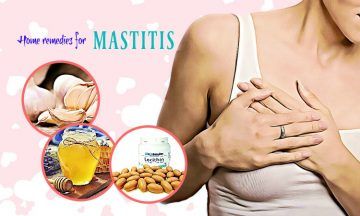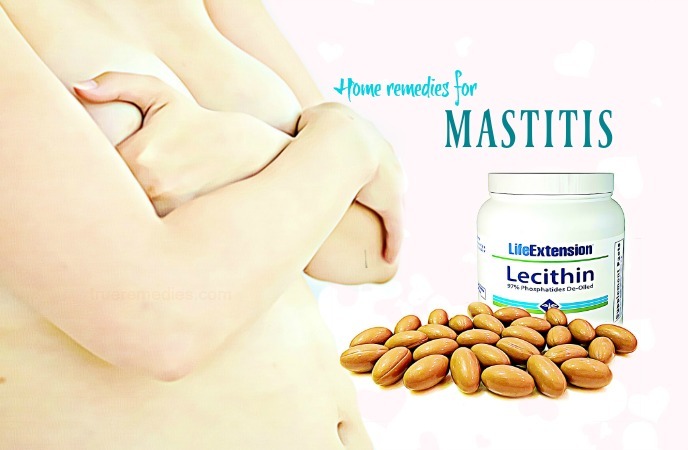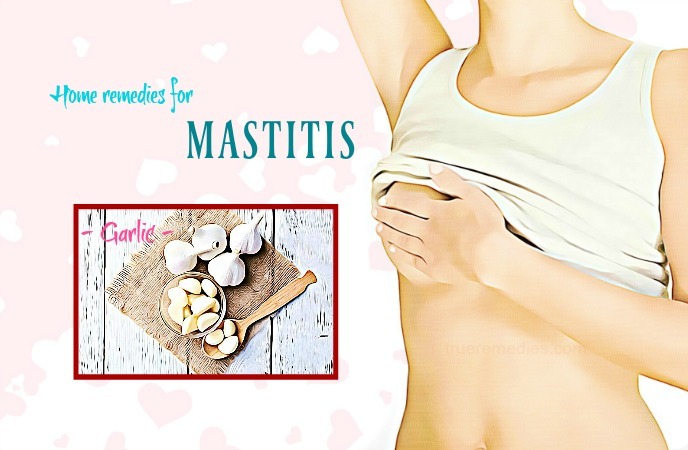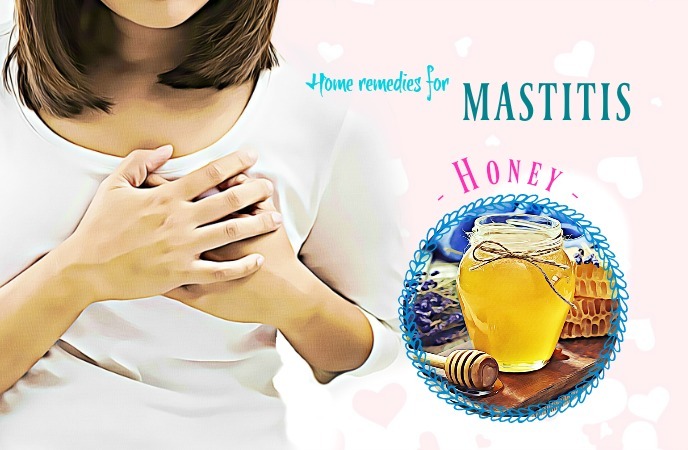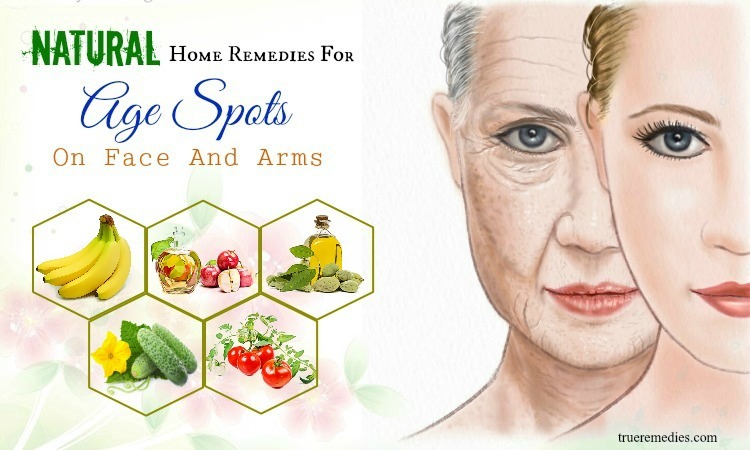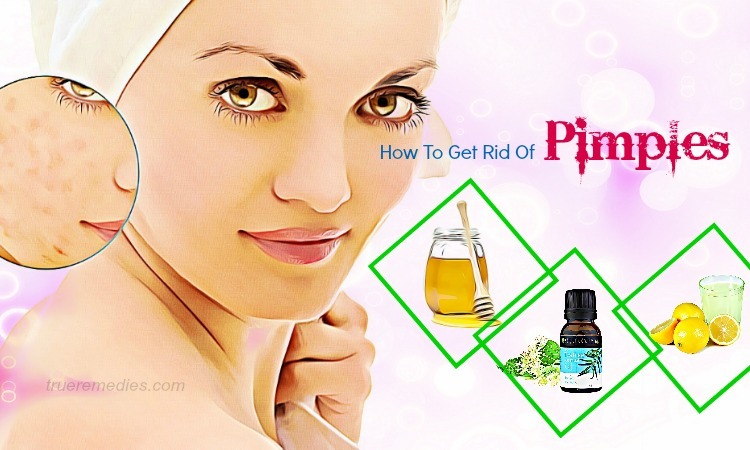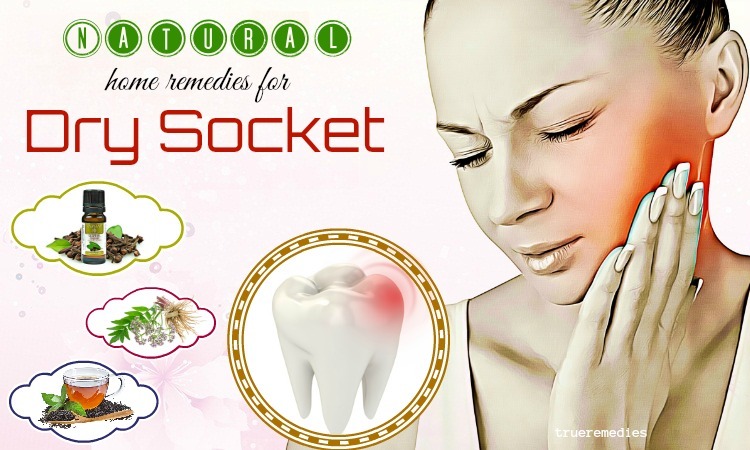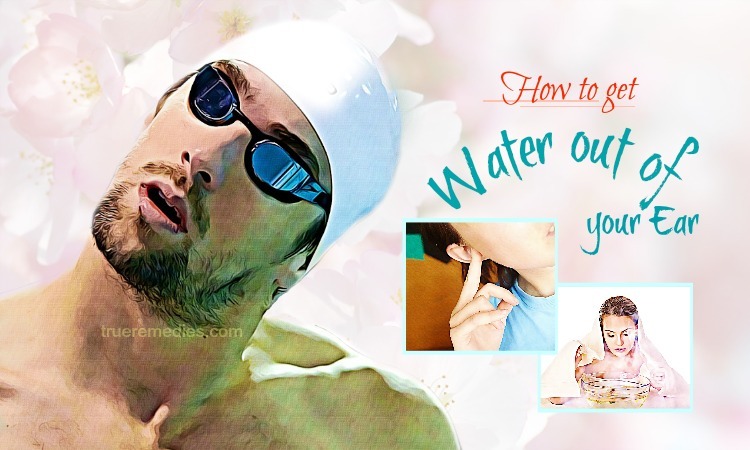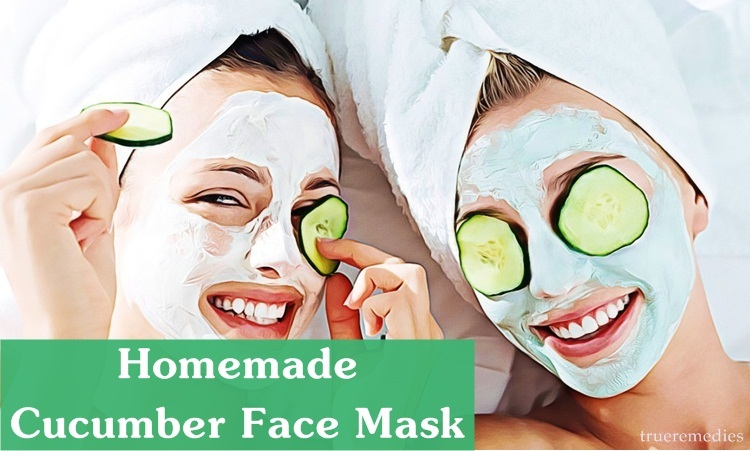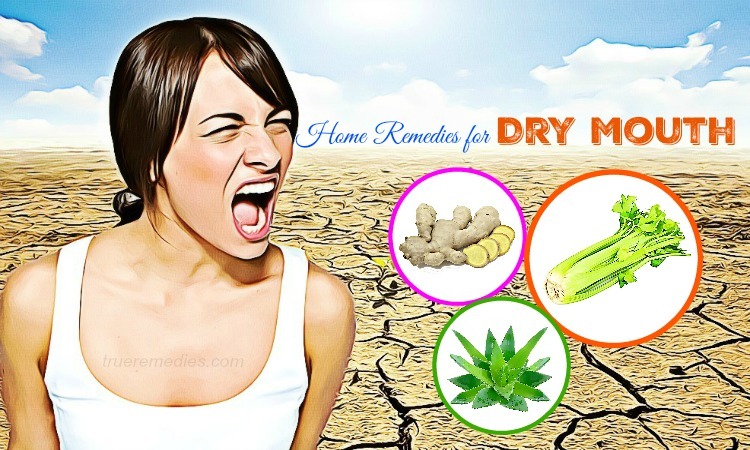Updated: 11/20/2019
CONTENTS
One day, your breasts become tender. Despite they do not get infected too often, once they do, it could hurt like no PMS or bad bra ever has. The name for an infection of breast tissues is mastitis.
If you are breastfeeding, it is called puerperal or lactation mastitis. If not, it is named periductal mastitis. Feeling like the flu, mastitis in fact could be treated quicker.
This article will help you handle this problem using natural home remedies for mastitis infection while breastfeeding, not to mention introducing general understanding about this condition. Check out on TrueRemedies.com!
What Is Mastitis?
Mastitis, also known as fever after breastfeeding, is an infection of the breast tissue which results in breast swelling, pain, redness and warmth. You may have chills and fever. Mastitis often impacts breast-feeding women (lactation mastitis), despite sometimes it could happen in non-breastfeeding women.
The majority of cases with mastitis happen in the first 6-12 weeks after giving birth. However, it could occur later during the breast-feeding period.
People with mastitis often feel run down, thereby making it hard to take care for a baby. Occasionally, it makes a mom to wean her baby too soon, but keep breastfeeding, even upon taking antibiotic for mastitis condition, is much better for both you and your baby.
What Are Symptoms Of Mastitis?
Similar to any other infection, the tissues around your infected breast will get inflamed in order to keep it from spreading to other body parts. For this condition, the milk duct which is infected caused your breasts to swell. Your breasts might feel warm or tender and look red.
Many women having mastitis feel as if they have the flu, including chills, achiness, and a fever of more than 101F or even higher. Also, you might see a discharge from the nipple or sense a hard lump in the breast.
Sometimes, a breast abscess could complicate the condition of mastitis. Abscesses and other noncancerous masses seem more often tender and feel mobile under the skin. The mass’ edge is often well-defined and regular. There are some indications showing a more serious infection are tender lump in the breast which does not become smaller after breastfeeding a baby, the pus draining from nipples, and persistent fever without improvement within 48-72 hours after treatment.
What Causes Mastitis?
Normally, mastitis could be a result of engorgement, plugged milk ducts, or milk which remains in the breast after breastfeeding (milk stasis). Such conditions could lead to an infection, damaged or cracked nipples as the germs may enter the breast through this way.
Milk stasis could happen for a variety of reasons, which are:
- a baby not appropriately attaching to the breasts while feeding
- missing feeds or infrequent feeds
- a baby getting problems sucking
Sometimes, this milk build-up could get infected with the availability of bacteria and this condition is called as infective mastitis.
In those women who are not breastfeeding, mastitis usually happens when the breast gets infected as a consequence of damage to nipples, like a sore or cracked nipple, or nipple piercing.
When To See A Doctor?
Oftentimes, you will notice flu-like symptoms for a few hours before you can recognize that your breast becomes tender and red. When you recognize these symptoms, you had better visit a doctor.
The doctor will want to see you in order to confirm his diagnosis. Then, he will prescribe antibiotics for an effective treatment. In case you used to suffer from this condition in the past, your doctor may prescribe antibiotics through the phone. But, if after two days of taking such medications, your symptoms do not get better, you should visit your doctor right instantly to warrant that your condition is not caused by a more serious issue.
Top 15 Home Remedies For Mastitis While Breastfeeding
Basically, mastitis could be treated easily and most of sufferers recover rather quickly. Prior to visiting a professional, you can also take some self-help measures first to save your times and energy. Either ways, it is worth noting that you need to treat blocked milk ducts so they will not progress to mastitis. But, once you suffer from this condition, there are some effective home remedies for mastitis you can apply to get over this condition without using medications.
1. Constant Nursing
The first and foremost suggestion in this list of home remedies for mastitis is resting and constant nursing. Taking rest, particularly with your baby in bed, will promote your health immune system and encourage regular feedings with your baby. This tip is recommended by lactation consultants who say that mastitis could be a signal that you might be pushing too hard and fast and you need to take a rest. Thus, you should go to bed and nurse your baby constantly. Maintaining a regular schedule via the infection, as long as you or the baby does not have a risk of oral thrush and it is not painful for you, can help unblock clogged milk duct. In fact, breast milk is not the favorite environment of bacteria.
Even when you are suffering from mastitis, your breast milk ought to be safe. Letting a fluid flow via feeding can keep your milk not stagnant and healthy. Sometimes, stagnant breast milk could result in infected milk. Nonetheless, if there are bacteria available in your milk, then the digestive juices may kill bacteria.
Upon nursing a baby, you had better start on the affected breast side because it is important to empty that breast entirely in order to relieve the mastitis. In case you feel painful to start with this side, then change to the other side. After your milk flows, you could breast-feed from your affected breast till it becomes soft.
2. Use Lecithin
Nursing moms can use lecithin to prevent the blockages in milk ducts. This lecithin reduces the viscosity of milk, thereby making it easier to pass through the ducts by enhancing the amount of polyunsaturated fats. If you use lecithin, it is recommended using 1,200 mgs for 4 times per day [1].
You could also make use of soy lecithin which is available in the supplement form in most local health food stores. Some foods are rich sources of lecithin, including dairy products, eggs, peanuts and beef, and different types of fruits and veggies.
3. Heat And Cold Therapy
This sounds simple but effective when it comes to home remedies for mastitis. Heat can encourage and promote circulation, thereby mobilizing infection-fighters in the inflamed body part [2].
What you need to do is:
- Massage your affected area first
- Then, place a warm compress on your affected area for 15 minutes
- Do this routine 3 times per day to decrease swelling, accelerate circulation and aid the flowing milk
Or, you can also have a warm baths and showers both before and after feeding your baby with your milk to get similar effects. Heating breasts also encourage your baby because he/she may seem reluctant to feed on the swollen or hard breast as it feels different. The heat can soothe the affected area and then normalize it.
4. Potatoes
Potatoes with its rich content of enzymes can alleviate swelling and redness. Additionally, potatoes have lots of vitamin C, helping infections naturally. Using potatoes also helps relieve irritated skin rashes thanks to its anti-inflammatory properties.
Take the steps below:
- Take a fresh potato to slice thinly
- Soak them in water for 15-20 minutes
- Place them on your affected area for 15 minutes more
- After discarding the slices, replace them with wet, fresh slices
- Repeat this procedure for 3 times each hour
- After a short break, repeat this routine again [3].
5. Compresses Or Poultices
Make a poultice or compress using dried fenugreek seed, comfrey, dandelion, and rosemary to reduce your mastitis symptoms naturally. Besides, it is a good idea to alternate between the cold and warm compresses as cold temperature can relieve pain whilst warmth can increase the circulation.
These herbs are all natural and contain antibacterial, anti-inflammatory properties which explain why they are mentioned in this list of home remedies for mastitis. Yarrow root, another herb, can be found to be a great pain reliever for cracked and sore nipples, thereby diminishing the impacts of mastitis [4].
If you want to make a fenugreek poultice (or any other poultice using the herbs above), just simply follow these instructions:
- Grind dried fenugreek using a mortar and pestle
- Place them in a bowl and add enough hot water to have a thick paste
- Spread this paste between two layers of gauze, light cotton cloth or muslin, and apply it to your affected area
- Wait for 20 minutes to wash it off with water
6. Garlic
One of the best and most familiar home remedies for mastitis is garlic. Despite raw garlic is not the best for a baby’s tummy, it works wonders for your infections. It acts as a natural antibiotic which can improve your immune system, fighting and preventing against mastitis, not to mention its antifungal, antibacterial and antiviral benefits.
Because garlic is rather potent, so it is great to consume it when you feel full. In case you do not want to ingest raw garlic, add its cooked form to your daily diet.
It is recommended taking 1-4 raw garlic cloves to ingest every day to reap its most benefits for mastitis relief.
7. Cabbage Leaves
Green, raw cabbage leaves are common for new mothers in regard to engorgement relief. Also, they are effective in combating infections such as mastitis in nipples.
Place a leaf of fresh cabbage inside your bra for a few hours each day to cool down and soothe your sore nipples. Replace it every several hours [5].
8. Salt Water
You can mix ½ teaspoon of salt with 8 ounces of water, then soak your affected area into this solution, after nursing. Remember to use low-salt saline solution because it has a salinity close to the tears, helping to keep your nipples bacteria-free and lessen swelling and pain. It acts as both preventative and treatment method for mastitis [6].
9. Massage
This sounds too good to be true, but it has really positive effects on mastitis. Massaging the clogged milk duct will release the blockage naturally. Yet, you need to massage in small circles whilst your baby is nursing.
10. Drink Lots Of Water
Drinking adequate water is highly important for those who want to fight mastitis. Always keep a quarter of water near you if you are lazy to go out to drink it. Sip constantly to keep your milk supply up and help your body fight off symptoms of mastitis.
11. Probiotics
Probiotics will get your immune system strong and healthy. Most of us have heard about it and have some vague understanding about how they work. The dairy isles of supermarkets and health food stores provide a wide array of supplements as well as foods with added “good” bacteria, mostly focusing on benefits on general wellbeing and gut health. But, such bacteria also help with breast milk. Breast milk changes and adapts when the babies become mature and the compounds and constituents of breast milk are highly different among women.
Fat and protein quality, water and carbohydrate content may vary basing on the age and stage of the baby. What is essential for a baby is different. In such sense, the breast milk is highly adaptive and dynamic.
In fact, healthy breastfeeding moms seem to have two particular probiotic strains compacted within their breast milk, which moms with mastitis do not. Those protective probitiocs are called Lactobacillus gasseri and Lactobacillus salivarius. They are powerful sources of immune and antimicrobial strength.
According to researches, there is a better method of treating mastitis. Instead of using traditional probiotics, experts now recommended oral probiotics. Freeze dried probiotic capsule have been proved to have great impacts on treating mastitis and decreasing breast inflammation and pain [7].
To sum up, you should understand that mastitis is a common and treatable issue, particularly for nursing mothers. You should keep focusing on breast-feeding via the infection whilst still maintaining a restful and peaceful environment for both yourself and your baby.
12. Fermented Cod Liver Oil
This is another way to get rid of mastitis symptoms, among many simple but effective home remedies for mastitis introduced here. You just need to take 1 teaspoon of cinnamon fermented cod liver oil gel twice per day during your infection to alleviate the swelling and inflammation associated with mastitis.
13. Honey
Honey has a lot of benefits for health and beauty. Not to mention its sweetness, honey also has antibacterial substances which can enable the human body to fight off bacteria triggering mastitis [8] [9]. It explains why honey is mentioned here. You are recommended consuming 2-3 spoons of honey whenever your mastitis happens. Repeat it a few times on a daily basis.
14. Echinacea Tincture
To make use of echinacea tincture for mastitis relief, you should do the following steps:
- Mix a dropperful of echinacea tincture with 3 raw garlic cloves.
- Blend 6 ounces of carrot juice into a blender and mix all ingredients together
- Have this mixture every 2 hours to get good results
15. Vitamin C
Briefly, vitamin C has a lot of benefits for remaining a healthy and strong body. Regarding treatments of mastitis, vitamin C intake gives great results. Thus, it is recommended to consume more foods containing a large content of vitamin C like lemons, strawberries, and oranges. If you want to maximize its benefits, you could buy vitamin C supplements. Having a balanced diet containing diverse nutrients will help you have enough nutrition to feed your baby.
Home Remedies For Mastitis Infection – Preventative Measures
Despite mastitis could be handled easily, this condition could recur once the underlying cause is not properly addressed. There are some preventative measures you can take to avoid the risk of developing mastitis, particularly when you are breastfeeding. Here they are:
- Breastfeed for about 6 months, if you could
- Try to encourage your baby to frequently feed, especially when your breasts feel overfull
- Make sure that your baby is attached well to your breast during the feeds. If you are not sure, ask for advice.
- Let your baby complete their feeds. The majority of babies release the breast when they have completely their feeding. Do not take your baby off the breast if they are not completed.
- Do not go longer between feeds. Cut down steadily, if possible.
- Avoid putting pressure on the breasts by using tight clothes, including bras
- Moms and midwives need to wash thoroughly their hands prior to touching their breasts after having a nappy change.
- Avoid nipple ointments, creams and prolonged use of the nipple pads
After reading this article of best natural home remedies for mastitis, what options did you choose to get rid of it? Feel free to share it below with us by dropping your words in the comment box. We love to hear it and will respond as soon as we could. Actually, sometimes mastitis could be a serious infection which could result in more serious problems. Thus, not all cases can be dealt by using natural home remedies for mastitis. In case your symptoms worsen or do not disappear, you should see a medical professional instantly.
For further tips and tricks about health and beauty, visit our Home Remedies page.

